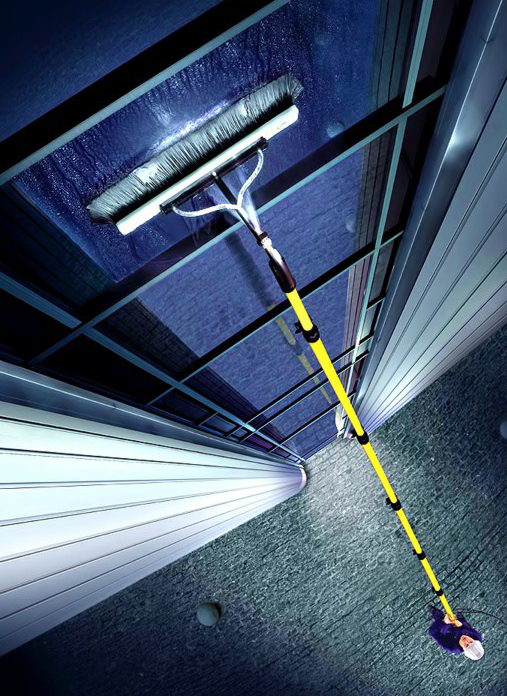Falls from a height remain the most common cause of fatalities in the workplace. It is always safer to eliminate the risk altogether by using suitable equipment or outsourcing the work to highly trained specialists.
The Hierarchy of Control for Working at Height prioritises preventing falls, with the goal of minimising the distance and consequences of a fall if it occurs. For every task that needs to be done at height you need to assess the risk and put appropriate control measures in place:
Avoid the need to work at height, for example by using extending equipment from the ground.
Prevent falls using appropriate access equipment such as work platforms or rope access.
Reduce the distance and consequences of a fall should one occur.
You should choose collective measures to prevent falls (such as mobile elevating work platforms – MEWPs) before other measures that may only mitigate the distance and consequences of a fall (such as fall protection systems) or which may only provide personal protection from a fall.
Importance of risk assessments
The law requires that employers and self-employed contractors assess the risk from work at height and go on to organise and plan the work so it is carried out safely. Employers and self-employed contractors must:
- Assess the risks
- Decide on the precautions required
- Record the significant findings
- Review the assessment as necessary
Useful tools and equipment which can eliminate working from height include:
- Installation at ground level only such as cables or trunking
- Extendable tools such as gutter vacuums or wash and reach and systems
- Lowering a lighting mast to ground level
- Inspection cameras and drones with suitable licensed operators
- Consider outsourcing high-risk work to specialist contractors
Learn more:
Working Safely at Height Guidance
Working Safely at Height Policy
Working at height: A brief guide

